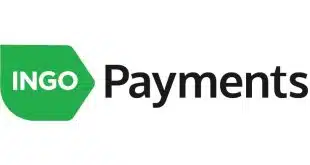The payments landscape looks far different than it did even five years ago, and it will likely undergo even more rapid changes in the next five. We are moving further into the digital age, where a large portion of consumers include Gen Z, or those born after 1996. This group will make up 40% of all US consumers by 2020 and shops far differently than previous demographics.
Experiencing the rise of the gig economy and on-demand retail, Gen Z consumers seek instant and seamless online shopping experiences. They demand superior experiences through technology, as this is all they have ever known.

The payments industry needs to follow the lead of other sectors to innovate solutions that meets the needs of a changing consumer base. How Uber revolutionized ride services, and the rise of direct-to-consumer brands that cut out third-party middleman, are great examples. Payments must look to chart a similar path.
Gen Z consumers are looking for instant gratification in their purchases. If they see an interesting pair of shoes or handbag on the street, they can pull out their phone and order them in real time. Our payments infrastructure must make this a viable process on every corner of the globe. A consumer in Belgium should be able to order goods in Australia instantly by the payment method of their choice.
Too often, focus on the digital consumer is lost in the entire payments value chain. Payment solutions are created without factoring in the specific needs of consumers in different regions across the globe.
Consumers should be the first touchpoint in the value chain, not the last. The payments industry must craft solutions backward, working from the consumer out. The channel-first mindset must change. Omnichannel thinking is a concept of the past. Consumer-centric is the way of the future. Payment solutions must cater to consumer preferences region-by-region to keep pace with the next generation of shoppers.
Local payment methods (LPMs) are key to unlocking global e-commerce and easing the payment process for consumers. LPMs are outside of your traditional credit card and brands such as Visa and Mastercard. They help facilitate the needs of different geographies, cultures, and domestic economies across the globe.
Worldwide, card penetration sits at a shockingly low 18.4%. This is proof that scaling globally requires thinking outside of just the world of card payments. The highest-growing markets in the world have large populations that continue to conform to and adopt everything digital, including the way they shop and pay online.
The payments industry also has the ability to drive financial inclusion and connect the global economy, but this will happen only if it keeps the end consumer top-of-mind. LPMs are creating the gateway to a more connected global economy, but it is up to merchants to offer these payment opportunities. Digitally minded consumers have seen innovations across many industries fundamentally shape how they live and work. It is time for payments to take this same approach.
—Steve Villegas is vice president of partner management at PPRO Group, Atlanta.
(Editor’s Note: Look for Part II on Monday.)





